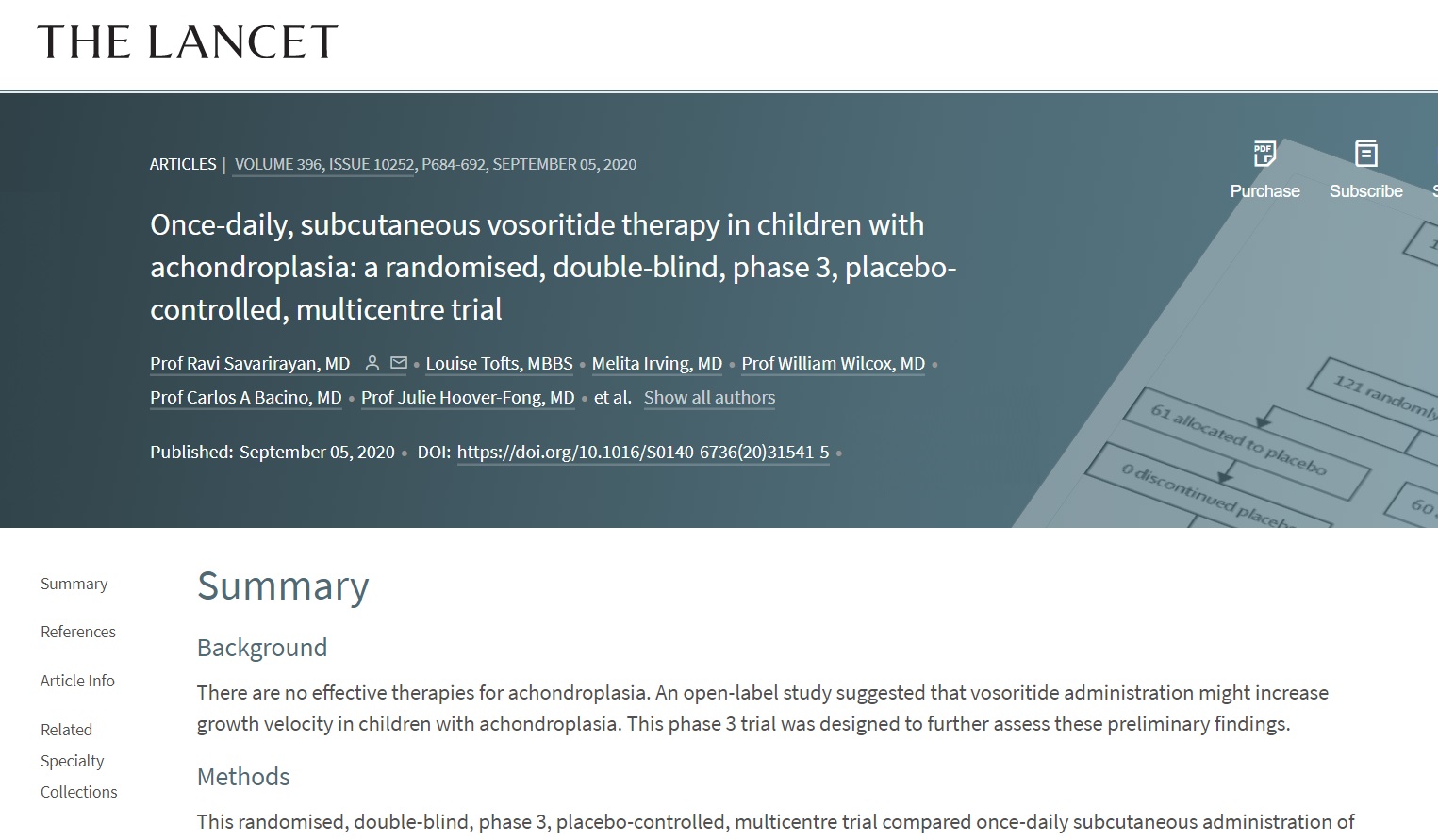Vosoritide phase 3 clinical trial data have been published
Results from the phase 3 clinical trial for vosoritide, that involved children with achondroplasia with ages between 5 to 18 years have been published.
The data demonstrated that daily subcutaneous administration of vosoritide to children with achondroplasia resulted in significantly increased growth velocity and height Z scores over baseline after one year of treatment as compared to those who received placebo with similar adverse effect profiles.[1]
What is the Z-score?
It’s a measure of how many standard deviations below or above the population mean a raw score is. In a simpler way, it gives the idea of how far from the mean a data point is.[2]

In BioMarin's press released was stated that "The primary endpoint changed from baseline in Average growth Velocity (AGV) at 52 weeks (1year) in participants administered daily subcutaneous injections of vosoritide, at a dose of 15.0 µg/kg/day, compared with placebo. The findings demonstrated that the adjusted mean difference in AGV between children in the vosoritide group and placebo group was 1.57cm per year in favor of vosoritide, a substantial proportion of the approximately 2 cm/year AGV deficit relative to average-stature children. The results of subgroup analyses for change from baseline in AGV were consistent with the overall mean difference between treatment groups in favor of vosoritide [1]
Safety profile
BioMarin stated also that "There were no adverse effects on, or significant improvements in upper to lower body segment proportionality in children receiving vosoritide during this 52-week study. As expected due to the duration of follow-up, no statistically significant changes in secondary endpoints related to wider health outcomes such as quality of life, activities of daily living, and frequency and type of medical and surgical interventions were found. Either a longer treatment period or earlier treatment initiation will be required to detect these changes."
References
1. Investors BioMarin press release
2. Statistics How to


